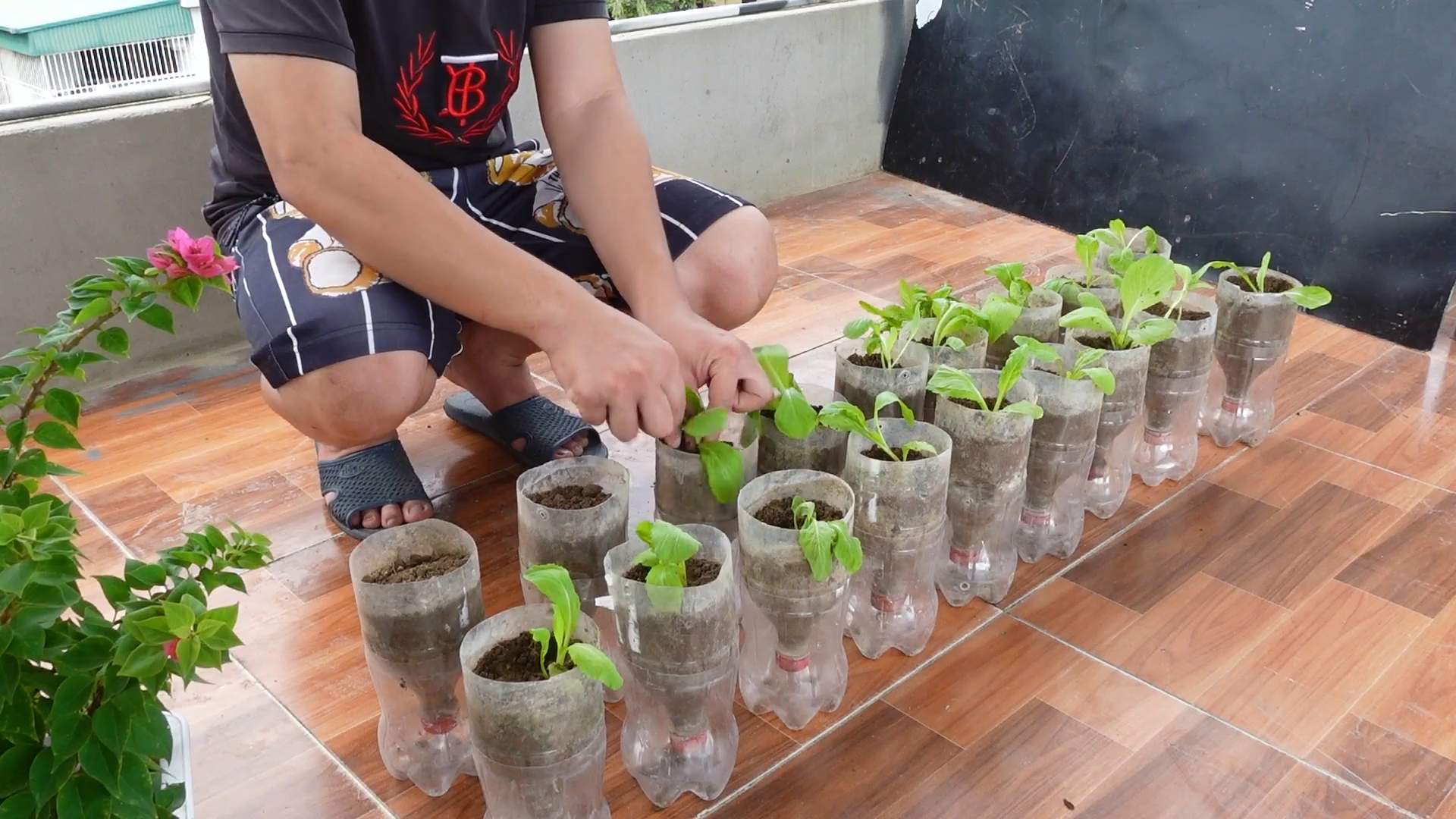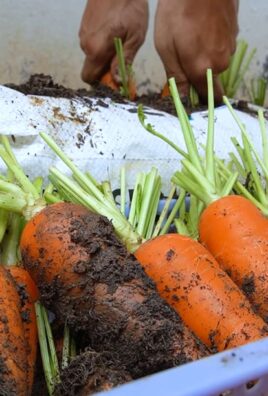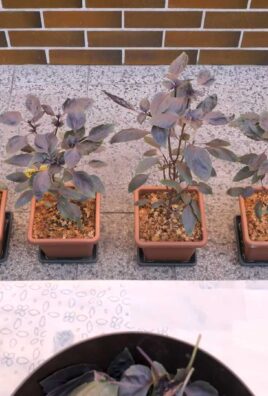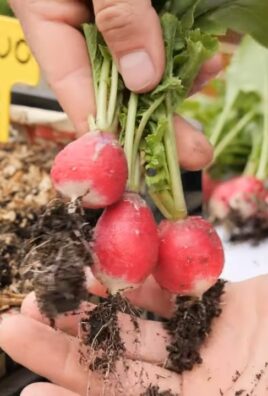Harvesting Mustard Greens from your own garden is incredibly rewarding, offering fresh, peppery flavors right at your fingertips! Have you ever dreamt of whipping up a vibrant salad or adding a zesty kick to your stir-fry with greens you nurtured yourself? Well, dream no more! This guide is your key to unlocking the secrets of a bountiful mustard green harvest, ensuring you enjoy these nutritious leaves at their peak.
Mustard greens have a rich history, dating back thousands of years. They’ve been cultivated across Asia and Europe, prized not only for their culinary uses but also for their medicinal properties. In some cultures, they even symbolize good fortune and prosperity! For generations, gardeners have passed down knowledge on how to best cultivate and harvest these leafy greens.
But why should you bother with learning the ins and outs of harvesting mustard greens? Simple! Store-bought greens often lack the freshness and flavor of homegrown varieties. Plus, knowing exactly when and how to harvest ensures you’re getting the most nutrients and the best taste. Imagine the satisfaction of serving a dish made with ingredients you personally grew – it’s a feeling like no other! This DIY guide will equip you with all the tips and tricks you need to become a mustard green harvesting pro, even if you’re a complete beginner. Let’s get started!

Harvesting Mustard Greens Like a Pro: A DIY Guide
Okay, so you’ve nurtured your mustard greens from tiny seeds to leafy wonders, and now you’re staring at them, wondering, “When do I pick these things?” Don’t worry, I’ve been there! Harvesting mustard greens is actually pretty straightforward, and with a few tips and tricks, you’ll be enjoying fresh, peppery greens in no time. This guide will walk you through everything you need to know, from identifying the perfect leaves to storing your harvest for maximum freshness.
Knowing When to Harvest
The beauty of mustard greens is that you can harvest them at different stages of maturity, depending on your preference.
* Baby Greens: If you’re after a milder flavor and tender texture, harvest your mustard greens when they’re young, about 3-4 inches tall. These are great for salads.
* Mature Greens: For a more intense, peppery bite, let your mustard greens grow to 6-8 inches tall. These are perfect for cooking, stir-fries, and braising.
* Avoid Overgrown Greens: Once the leaves get too large (over 10 inches) or start to yellow, they can become tough and bitter. It’s best to harvest them before they reach this stage. Also, if your mustard greens start to bolt (send up a flower stalk), the leaves will become bitter. Harvest them immediately to salvage what you can.
Tools You’ll Need
You don’t need a ton of fancy equipment for harvesting mustard greens. Here’s what I usually grab:
* Sharp Knife or Scissors: A sharp tool is essential for making clean cuts and preventing damage to the plant. I prefer using kitchen shears, but a sharp knife works just as well.
* Basket or Bag: You’ll need something to collect your harvested greens. A basket or a reusable bag works perfectly.
* Gloves (Optional): If you have sensitive skin, gloves can protect your hands from any potential irritation.
Step-by-Step Harvesting Guide
Alright, let’s get down to the nitty-gritty. Here’s how I harvest my mustard greens:
1. Choose Your Leaves: Carefully inspect your mustard greens and select the leaves you want to harvest. Remember, you can harvest individual leaves or cut the entire plant. For a continuous harvest, I recommend picking the outer leaves, allowing the inner leaves to continue growing.
2. Make the Cut: Using your sharp knife or scissors, cut the leaves about an inch above the soil line. If you’re harvesting individual leaves, cut them at the base of the stem, where they connect to the main stalk.
3. Handle with Care: Gently place the harvested leaves in your basket or bag. Avoid packing them too tightly, as this can bruise them.
4. Repeat: Continue harvesting until you have the desired amount of greens.
5. Water After Harvest: After harvesting, give your mustard greens a good watering. This will help them recover and encourage new growth.
Harvesting the Whole Plant
Sometimes, you might want to harvest the entire plant, especially if it’s bolting or if you need a large quantity of greens. Here’s how to do it:
1. Cut at the Base: Using your sharp knife or scissors, cut the entire plant at the base, about an inch above the soil line.
2. Remove Yellowing Leaves: Discard any yellowing or damaged leaves.
3. Wash and Store: Wash the greens thoroughly and store them as described below.
Washing and Storing Your Harvest
Proper washing and storage are crucial for keeping your mustard greens fresh and flavorful.
1. Wash Thoroughly: Fill a large bowl or sink with cold water. Add the harvested greens and gently swish them around to remove any dirt or debris. You might need to repeat this process a few times until the water runs clear.
2. Dry the Greens: This is a really important step! Excess moisture can cause the greens to rot quickly. You can use a salad spinner to remove the water, or you can gently pat them dry with a clean kitchen towel.
3. Store Properly: There are a couple of ways I like to store my mustard greens:
* In a Plastic Bag: Place the dry greens in a plastic bag lined with a paper towel. The paper towel will absorb any excess moisture. Seal the bag loosely and store it in the refrigerator crisper drawer.
* In a Container: You can also store the greens in a container lined with a paper towel. Again, make sure the greens are dry before storing them.
4. Use Within a Week: Properly stored mustard greens should last for about a week in the refrigerator.
Extending Your Harvest
Mustard greens are pretty resilient, and with a little care, you can extend your harvest for several weeks.
* Succession Planting: Plant new seeds every few weeks to ensure a continuous supply of fresh greens.
* Cut-and-Come-Again Harvesting: As mentioned earlier, harvesting the outer leaves allows the inner leaves to continue growing, providing you with multiple harvests from the same plant.
* Protect from Frost: If you live in an area with mild winters, you can protect your mustard greens from frost with a row cover or cold frame. This will allow you to harvest them for a longer period.
Dealing with Pests and Diseases
While mustard greens are relatively easy to grow, they can sometimes be affected by pests and diseases. Here are a few common problems and how to deal with them:
* Aphids: These tiny insects can suck the sap from the leaves, causing them to become distorted. You can control aphids by spraying them with a strong stream of water or by using insecticidal soap.
* Flea Beetles: These small beetles can chew holes in the leaves. You can control flea beetles by covering your plants with row covers or by using diatomaceous earth.
* Downy Mildew: This fungal disease can cause yellow spots on the leaves. You can prevent downy mildew by providing good air circulation and avoiding overhead watering. If your plants are affected, remove the infected leaves and spray them with a fungicide.
Enjoying Your Harvest
Now for the best part – enjoying the fruits (or rather, greens!) of your labor. Mustard greens are incredibly versatile and can be used in a variety of dishes.
* Salads: Young, tender mustard greens are delicious in salads. Their peppery flavor adds a nice kick.
* Stir-fries: Mature mustard greens are great in stir-fries. They hold their shape well and add a bold flavor.
* Soups and Stews: Mustard greens can also be added to soups and stews for extra flavor and nutrients.
* Braised Greens: Braising mustard greens with garlic, olive oil, and a touch of vinegar is a classic Southern dish.
* Smoothies: Add a handful of mustard greens to your smoothies for a healthy boost.
Saving Seeds (For Next Year!)
If you want to save seeds from your mustard greens for next year, here’s what you need to do:
1. Allow Bolting: Let a few of your mustard green plants bolt (send up a flower stalk).
2. Let Seeds Mature: Allow the seed pods to dry on the plant. They will turn brown and brittle.
3. Harvest Seeds: Cut the seed pods from the plant and place them in a paper bag.
4. Dry Seeds: Allow the seed pods to dry completely in a cool, dry place.
5. Separate Seeds: Once the seed pods are dry, crush them to release the seeds.
6. Store Seeds: Store the seeds in an airtight container in a cool, dry place. They should remain viable for several years.
Troubleshooting Common Issues
Sometimes, things don’t go exactly as planned. Here are a few common issues you might encounter when harvesting mustard greens and how to troubleshoot them:
* Bitter Greens: If your mustard greens are too bitter, it could be due to several factors, such as overmaturity, bolting, or stress. Make sure to harvest them at the right stage of maturity, avoid letting them bolt, and provide them with adequate water and nutrients.
* Tough Greens: Tough greens are usually a sign of overmaturity. Harvest them when they’re younger and more tender.
* Yellowing Leaves: Yellowing leaves can be caused by a variety of factors, such as nutrient deficiencies, pests, or diseases. Make sure your plants are getting enough nutrients, and inspect them regularly for pests and diseases.
* Slow Growth: Slow growth can be caused by poor soil, inadequate sunlight, or lack of water. Make sure your plants are planted in well-draining soil, receive at least 6 hours of sunlight per day, and are watered regularly.
Final Thoughts
Harvesting mustard greens is a rewarding experience that allows you to enjoy fresh, flavorful greens straight from your

Conclusion
So, there you have it! Mastering the art of harvesting mustard greens at home is not only incredibly simple, but it also unlocks a world of flavor and freshness that you simply can’t replicate with store-bought options. We’ve walked you through the process, from identifying the perfect leaves to ensuring a continuous harvest throughout the growing season.
Why is this DIY trick a must-try? Because it puts you in control. You dictate the quality, the freshness, and even the flavor profile of your mustard greens. Imagine the vibrant, peppery bite of freshly harvested greens adding a zing to your salads, stir-fries, or even a hearty pot of Southern-style greens. The difference is truly remarkable.
But the benefits extend beyond just taste. Growing and harvesting your own mustard greens connects you to the food you eat, fostering a deeper appreciation for the natural world. It’s a sustainable practice that reduces your reliance on commercially grown produce, minimizing your environmental impact. Plus, it’s a fantastic way to get some exercise and fresh air!
Looking for variations? Absolutely! Consider these ideas to personalize your mustard green harvest:
* **Baby Greens:** Harvest smaller, younger leaves for a milder flavor and tender texture, perfect for salads.
* **Spicy Kick:** Allow the plants to mature slightly for a more intense, peppery flavor. Be mindful that overly mature leaves can become tough.
* **Succession Planting:** Plant new seeds every few weeks to ensure a continuous supply of fresh mustard greens throughout the growing season.
* **Companion Planting:** Plant mustard greens alongside other vegetables like radishes or carrots to deter pests and improve soil health.
* **Different Varieties:** Experiment with different varieties of mustard greens, such as ‘Florida Broadleaf,’ ‘Red Giant,’ or ‘Osaka Purple,’ to discover your favorite flavor profiles. Each variety offers a unique taste and texture experience.
We wholeheartedly encourage you to give this DIY trick a try. It’s easier than you think, and the rewards are well worth the effort. Whether you have a sprawling garden or a small container on your balcony, you can successfully grow and harvest your own delicious mustard greens.
Don’t be afraid to experiment, learn from your experiences, and most importantly, have fun! We’re confident that you’ll be amazed by the difference that homegrown mustard greens can make.
Now, we want to hear from you! Share your experiences, tips, and tricks in the comments below. What varieties of mustard greens have you grown? What are your favorite ways to prepare them? Let’s create a community of passionate gardeners and food lovers who appreciate the simple pleasure of harvesting fresh, homegrown produce. We are eager to learn from your journey of **harvesting mustard greens**.
Frequently Asked Questions (FAQ)
Q: When is the best time to harvest mustard greens?
A: The ideal time to harvest mustard greens is when the leaves are young and tender, typically about 4-6 weeks after planting. Look for leaves that are 6-8 inches long. You can harvest individual leaves as needed, or cut the entire plant about an inch above the ground for a “cut-and-come-again” harvest. Harvesting in the morning, after the dew has dried, is generally recommended for the best flavor and texture. Avoid harvesting during the hottest part of the day, as the leaves may be wilted.
Q: How do I know if my mustard greens are ready to harvest?
A: Several indicators will tell you when your mustard greens are ready for harvesting. First, check the size of the leaves. They should be large enough to handle easily, typically around 6-8 inches in length. Second, examine the color and texture. The leaves should be a vibrant green (or purple, depending on the variety) and feel tender to the touch. Avoid harvesting leaves that are yellowing, browning, or showing signs of damage. Finally, taste a small piece of a leaf. If it has a pleasant, peppery flavor, it’s likely ready to harvest. If it tastes overly bitter or tough, it may need more time to mature.
Q: Can I harvest mustard greens multiple times from the same plant?
A: Yes, absolutely! Mustard greens are well-suited for a “cut-and-come-again” harvesting method. This means you can harvest individual leaves or cut the entire plant about an inch above the ground, and it will regrow, providing you with multiple harvests. To encourage regrowth, make sure to leave a few leaves on the plant. Also, fertilize the plants regularly with a balanced fertilizer to provide them with the nutrients they need to produce new growth.
Q: How do I store harvested mustard greens?
A: To store harvested mustard greens, gently rinse them under cool water to remove any dirt or debris. Pat them dry with a clean towel or spin them in a salad spinner. Wrap the greens loosely in a paper towel and place them in a plastic bag or container in the refrigerator. They should stay fresh for about 3-5 days. Avoid storing them near fruits like apples or bananas, as these fruits release ethylene gas, which can cause the greens to spoil more quickly.
Q: What are some common problems when growing mustard greens, and how can I prevent them?
A: Some common problems when growing mustard greens include pests like aphids, flea beetles, and cabbage worms, as well as diseases like downy mildew and white rust. To prevent these problems, practice good garden hygiene by removing weeds and debris regularly. Use row covers to protect your plants from pests. Plant resistant varieties of mustard greens. Ensure proper spacing between plants to promote good air circulation. Water at the base of the plants to avoid wetting the leaves, which can encourage fungal diseases. If you do encounter pests or diseases, treat them promptly with organic pest control methods or fungicides.
Q: Can I eat the stems of mustard greens?
A: Yes, you can eat the stems of mustard greens, but they may be tougher than the leaves. To make them more palatable, remove the tough outer layer with a vegetable peeler. You can then chop the stems and add them to stir-fries, soups, or stews. They will take longer to cook than the leaves, so add them to the dish earlier in the cooking process.
Q: Are there any health benefits to eating mustard greens?
A: Yes, mustard greens are packed with nutrients and offer numerous health benefits. They are an excellent source of vitamins A, C, and K, as well as folate, calcium, and fiber. They also contain antioxidants that can help protect against cell damage. Eating mustard greens may help boost your immune system, improve bone health, and reduce the risk of chronic diseases like heart disease and cancer.
Q: Can I freeze mustard greens for later use?
A: Yes, you can freeze mustard greens, but they will need to be blanched first to preserve their color, flavor, and texture. To blanch mustard greens, bring a pot of water to a boil. Add the greens and cook for 2-3 minutes. Remove the greens from the boiling water and immediately plunge them into a bowl of ice water to stop the cooking process. Drain the greens and squeeze out any excess water. Place them in freezer bags or containers and freeze for up to 6-8 months.
Q: What are some creative ways to use harvested mustard greens in cooking?
A: Beyond the traditional Southern-style braised greens, there are countless ways to incorporate your freshly harvested mustard greens into your cooking. Try adding them to smoothies for a nutrient boost, sautéing them with garlic and olive oil as a side dish, or using them as a topping for pizza or tacos. You can also add them to soups, stews, and stir-fries. Get creative and experiment with different flavor combinations to discover your favorite ways to enjoy this versatile vegetable. Consider making a mustard green pesto or adding them to egg dishes like omelets or frittatas. The possibilities are endless!




Leave a Comment